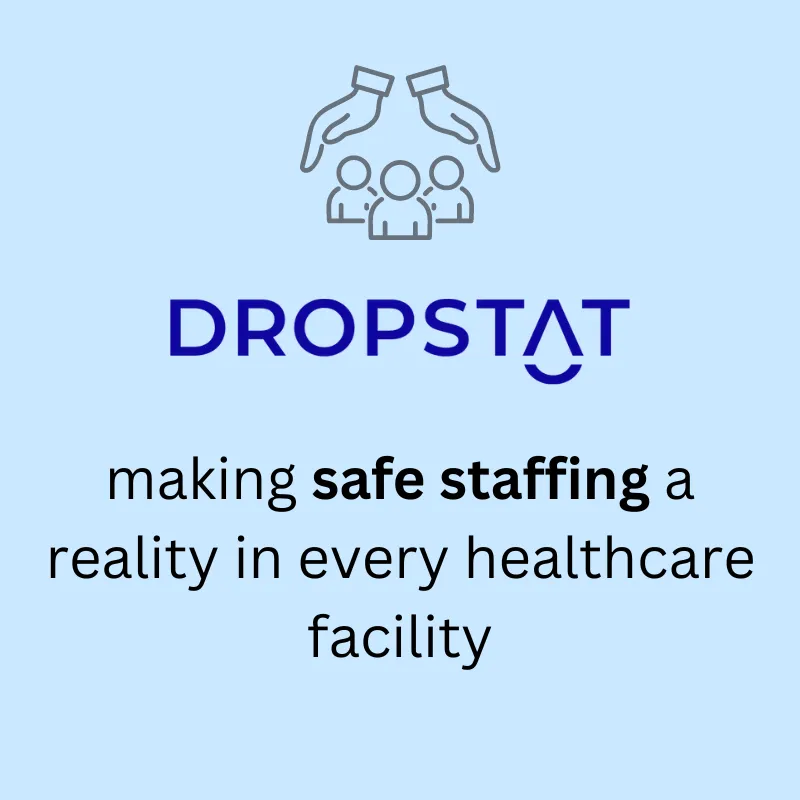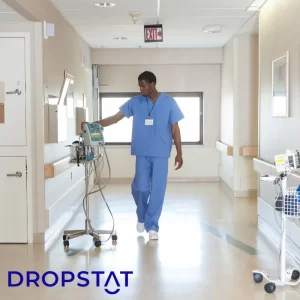What are patient outcomes?
Patient outcomes refer to the results of medical treatment or interventions for patients, for patients’ health status, quality of life, satisfaction with care, and overall well-being. Positive patient outcomes are achieved when patients experience improved health, reduced symptoms, and a better quality of life. Improving patient outcomes should be the main focus of any healthcare system since improved patient outcomes are the cause and result of better clinical outcomes, reduced hospital readmissions, and lower healthcare costs.
8 effective ways healthcare leaders can improve patient outcomes
Patient outcomes are key to building a good public image. The public view of a healthcare facility often affects whether patients choose to use it. Major topics that stand out when healthcare leaders consider how to improve patient outcomes include the following:
1. Improve the patient intake process
The first and most crucial step towards providing quality care and improving patient outcomes is the patient intake and diagnosis process. Better patient intake and diagnosis can improve patient outcomes with:
- Accurate diagnosis: Accurate and timely diagnosis is essential during the intake process. Healthcare providers can collect comprehensive information about the patient to make a more accurate diagnosis for better patient outcomes.
- Personalized treatment plans: Healthcare providers can tailor treatment plans to patients’ specific needs and preferences. This will lead to better patient engagement and adherence to treatment, resulting in improved patient outcomes.
- Early detection of health issues: Better patient intake can lead to earlier detection of health issues, improving patient outcomes. Doctors can develop treatment plans for conditions earlier in the recovery process and reduce invasive and costly treatments.
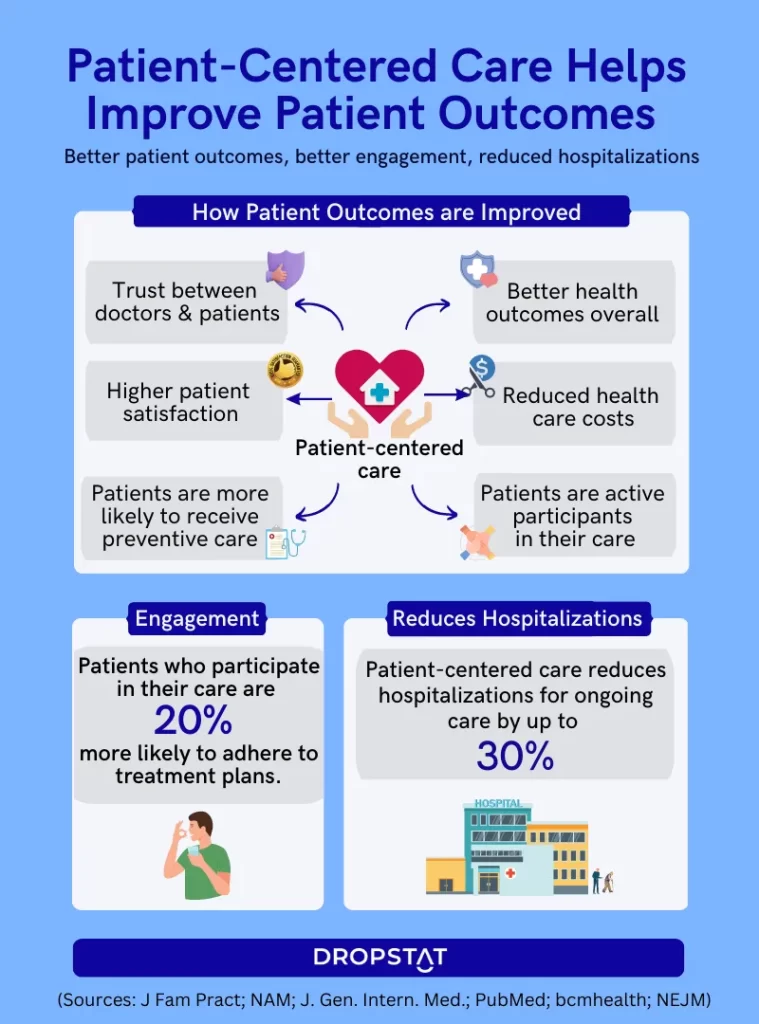
2. Educate patients to improve outcomes
Patient education is a critical component of improving patient outcomes. When patients understand their health conditions, medications, and treatment plans, they are more likely to comply with medical recommendations and make informed decisions about their care.
Nurses should focus on improving health outcomes through better patient understanding and education and use face-to-face counseling, written materials, and online resources.
Healthcare facilities can also leverage technology to improve patient education. For example, healthcare facilities can use interactive patient education tools to teach patients about their health conditions and treatment options. Interactive tools can be personalized to each patient’s unique needs and language to make patient education especially effective.
Healthcare facilities can also use electronic health records (EHRs) to provide patients with easy access to their health information. This includes blood tests and other results, and medication lists. EHRs can also be used to send patients automated reminders about upcoming appointments and medication refills, which are very important in achieving better patient outcomes.
3. Implement evidence-based practices
Healthcare leaders can improve patient outcomes by implementing evidence-based practices (EBD – objective, research-based intervention proven to enhance patient outcomes.) Investing in medical research and keeping at the forefront of current research can help healthcare providers to remain open to new treatment options and improve patient outcomes.
Examples of research-based interventions effective in improving patient outcomes include using EHRs, medication reconciliation to reduce medication errors in nursing, efforts to improve patient safety, and regular patient follow-ups.

4. Improve nursing care
Nursing staff has an essential role in patient care and outcomes. Healthcare leaders can improve patient outcomes by focusing on improving nursing care by providing nurses with the necessary resources, support, and training to deliver high-quality care. Additionally, healthcare leaders can ensure nurses are monitoring patient conditions and providing education on health conditions and treatment options.
To improve patient outcomes, nurses should focus on delivering patient-centered care. Patient-centered care involves engaging patients in their care and tailoring care to their needs and preferences. By listening to patients, nurses can identify and address patient concerns, leading to better patient experiences and improved patient outcomes. Nurses who are knowledgeable about best practices can also provide more effective care.
5. Ensure continuity of care
Continuity of care refers to the degree to which a patient’s healthcare is consistent and coherent over time. Healthcare managers can improve patient outcomes by ensuring continuity of care within a facility by assigning patients to specific healthcare providers and providing patients with easy access to their medical records. Continuity of care can lead to better communication between patients and providers, leading to improved patient outcomes.
When patients receive care from the same healthcare provider over time, they are more likely to receive consistent and coordinated care. This can lead to better communication between patients and providers, leading to fewer medical errors and better patient safety. Additionally, when patients have a regular healthcare provider, they are more likely to receive preventative care, leading to better overall health and reduced curative healthcare costs.
Healthcare facilities can improve continuity of care by implementing systems to ensure patients benefit from continuous care after discharge. This can include patients knowing the name of their physician, easy access to their medical records, and clear avenues of communication between staff in one healthcare facility and another. Having a good patient-physician connection encourages a patient to understand more about their care package and improves the healthcare environment. By improving continuity of care, healthcare facilities can greatly improve patient outcomes.
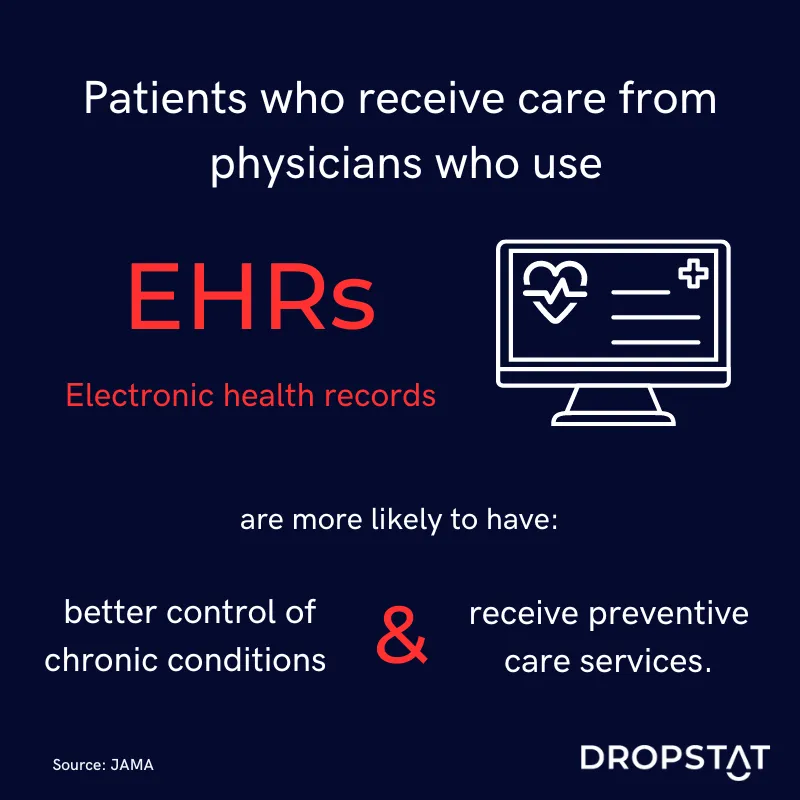
6. Streamline treatment planning for positive patient outcomes
Effective treatment planning can help improve patient outcomes in more than one way.
- Faster treatment: Streamlining treatment planning can reduce the time between diagnosis and treatment and address health issues more quickly. By reducing the time between diagnosis and treatment, patients are less likely to experience complications or adverse events, leading to improved health outcomes.
- Personalized treatment: Streamlined treatment planning can lead to more personalized treatment plans since healthcare providers can quickly gather comprehensive patient information and tailor treatment plans to the patient’s specific needs and preferences. This can improve patient engagement and adherence to treatment, leading to improved health outcomes.
- Respecting patient choices: Empowering the patient with choices of treatment options, healthcare facility, or choice of physician can improve patient engagement and patient outcomes.
7. Improve healthcare staff communication
Healthcare leaders can improve patient outcomes by ensuring effective communication in nursing and between healthcare staff. This can be achieved by
- providing staff with training on effective communication,
- supplying any tools needed for effective communication, and
- implementing systems to ensure timely and accurate communication between healthcare providers.
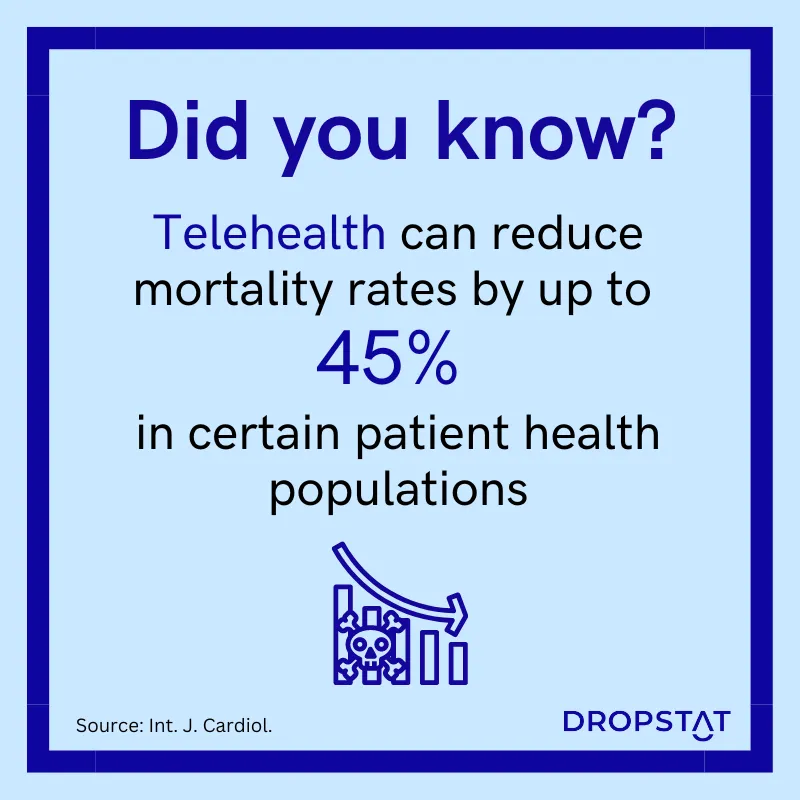
8. Implement technology solutions for better patient outcomes
Healthcare leaders can implement technology solutions to improve patient outcomes by leveraging digital health platforms to improve patient education, monitor patient conditions, and deliver care remotely. Technology also offers solutions for strategic staff planning and shift staffing management.
- Improved access to care: Offering telehealth to patients can increase access to care, particularly for patients who live in rural or remote areas. By using telehealth, patients can connect with healthcare providers and receive care from the comfort of their homes, reducing the need for travel and potentially reducing the risk of exposure to infectious diseases.
- More efficient care delivery: Maintaining EHRs can improve patient outcomes by streamlining care delivery processes between different healthcare providers. With EHRs, providers can quickly access patient information, track care delivery, and monitor patient progress. Care providers can identify potential health issues before they become more serious, leading to earlier intervention and improved patient outcomes.
- Real-time monitoring and intervention: Telehealth and other technologies can improve patient outcomes by providing real-time monitoring and intervention. Patients can monitor their health status by using wearable devices which transmit information to healthcare providers in real time. This can allow providers to intervene quickly when necessary, potentially preventing complications and improving patient outcomes.
How Dropstat can help healthcare facilities improve patient outcomes
Dropstat’s advanced scheduling platform ensures that every shift is filled with the required nurse-patient ratios. This is a key factor for fulfilling many of the objectives for improving patient outcomes. When a shift has all the required nurses and skill sets during the entire shift, patients receive enough attention, communication, education, and information. This gives patients the encouragement and facilitation to make a faster and fuller recovery.
In addition, Dropstat makes scheduling and filling shifts a seamless process which helps to reduce workplace stress and enhance a positive work environment. This is another important factor for improving patient outcomes.
Schedule a demo to learn about Dropstat’s AI-powered nurse scheduling staff shift app and see how it can help improve patient outcomes in your facility.
